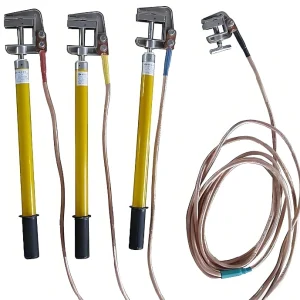
What is Grounding Wire?
Definition and Purpose
- Definition: A grounding wire is a safety component used in electrical systems to connect electrical circuits to the earth.
- Purpose: It provides a path for electrical current to safely return to the ground in case of a fault, preventing electrical shock and damage.
Importance in Electrical Systems
- Safety: Grounding wires help protect people from electrical shocks by diverting excess electricity away from appliances and into the ground.
- System Protection: They prevent damage to electrical appliances and infrastructure by stabilizing voltage levels and mitigating the risk of electrical fires.
- Compliance: Proper grounding is required by electrical codes and standards to ensure the safety and reliability of electrical systems.
Types of Grounding Wires
Copper Grounding Wire
- Properties and Advantages:
- High Conductivity: Copper has excellent electrical conductivity, making it an ideal material for grounding.
- Durability: Resistant to corrosion and long-lasting.
- Flexibility: Easy to work with and install due to its flexibility.
- Common Uses: Widely used in residential, commercial, and industrial electrical systems.
Aluminum Grounding Wire
- Characteristics and Usage:
- Lightweight: Aluminum is lighter than copper, making it easier to handle and install.
- Cost-Effective: Generally cheaper than copper, offering a cost-effective alternative.
- Adequate Conductivity: Provides sufficient conductivity for many grounding applications.
- Usage: Commonly used in large-scale industrial applications and where weight savings are important.
Galvanized Steel Grounding Wire
- Benefits and Applications:
- Strength: Galvanized steel is strong and can withstand physical stress and environmental conditions.
- Corrosion Resistance: The galvanization process provides a protective coating that resists rust and corrosion.
- Cost-Effective: More affordable than copper while still offering good conductivity.
- Applications: Often used in grounding systems for outdoor installations and in harsh environments where mechanical strength is required.
Functions of Grounding Wire
Safety
- Prevention of Electrical Shocks: Grounding wires provide a safe path for excess electrical current to follow, preventing electric shocks.
- Protection Against Electrical Fires: By directing unwanted current safely into the ground, grounding wires reduce the risk of electrical fires caused by short circuits or overloads.
Stability
- Maintaining Voltage Levels: Grounding helps stabilize voltage levels within electrical systems, ensuring a consistent and reliable power supply.
- Reducing Noise and Interference: Proper grounding minimizes electrical noise and interference, which is crucial for the smooth operation of sensitive electronic equipment.
Installation and Maintenance
Installation and Maintenance
To ensure the effectiveness of grounding wires, proper installation is crucial. Begin by selecting the appropriate type of grounding wire for your specific application, considering factors such as conductivity, durability, and environmental conditions. Next, follow a step-by-step guide for installation:
- Identify Grounding Points: Determine the best locations for connecting the grounding wire to the electrical system and the earth.
- Prepare the Grounding Wire: Cut the wire to the required length and strip the insulation from the ends, if necessary.
- Connect to Electrical System: Securely attach one end of the grounding wire to the designated grounding point in the electrical system, ensuring a solid connection.
- Connect to Ground Rod: Attach the other end of the grounding wire to a ground rod driven deep into the earth. Ensure the connection is tight and free from corrosion.
- Secure Connections: Use appropriate clamps or connectors to secure all connections, and double-check for tightness and stability.
Regular Maintenance Tips
Regular maintenance of grounding wires is essential to ensure ongoing safety and performance. Follow these inspection procedures:
- Visual Inspection: Regularly check for visible signs of wear, such as frayed wires, corrosion, or loose connections.
- Testing Continuity: Use a multimeter to test the continuity of the grounding wire, ensuring it provides a clear path to the ground.
- Checking Connections: Inspect all connections for tightness and stability. Re-secure any loose connections as needed.